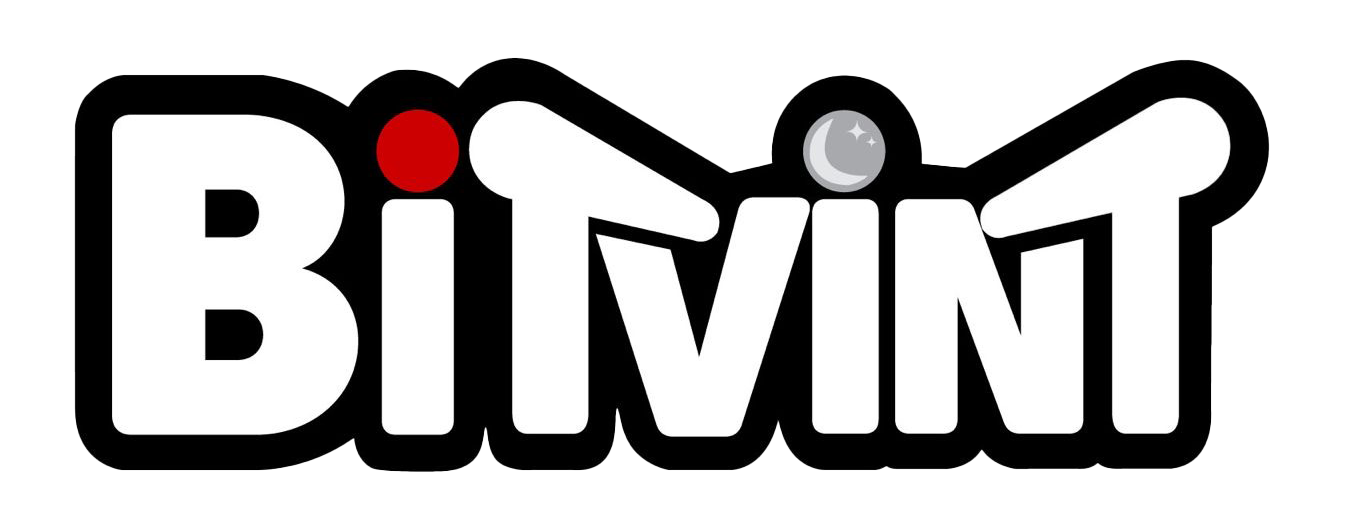Introduction
Released in 1991, Captain Commando is a side-scrolling beat-’em-up arcade game developed and published by Capcom. Set in a sci-fi version of Metro City in the year 2026, the game features a team of futuristic superheroes battling mutants, robots, and criminal syndicates. With wild enemy designs, rideable mechs, and four-player co-op, Captain Commando became a cult classic and a defining title of Capcom’s CPS-1 era.
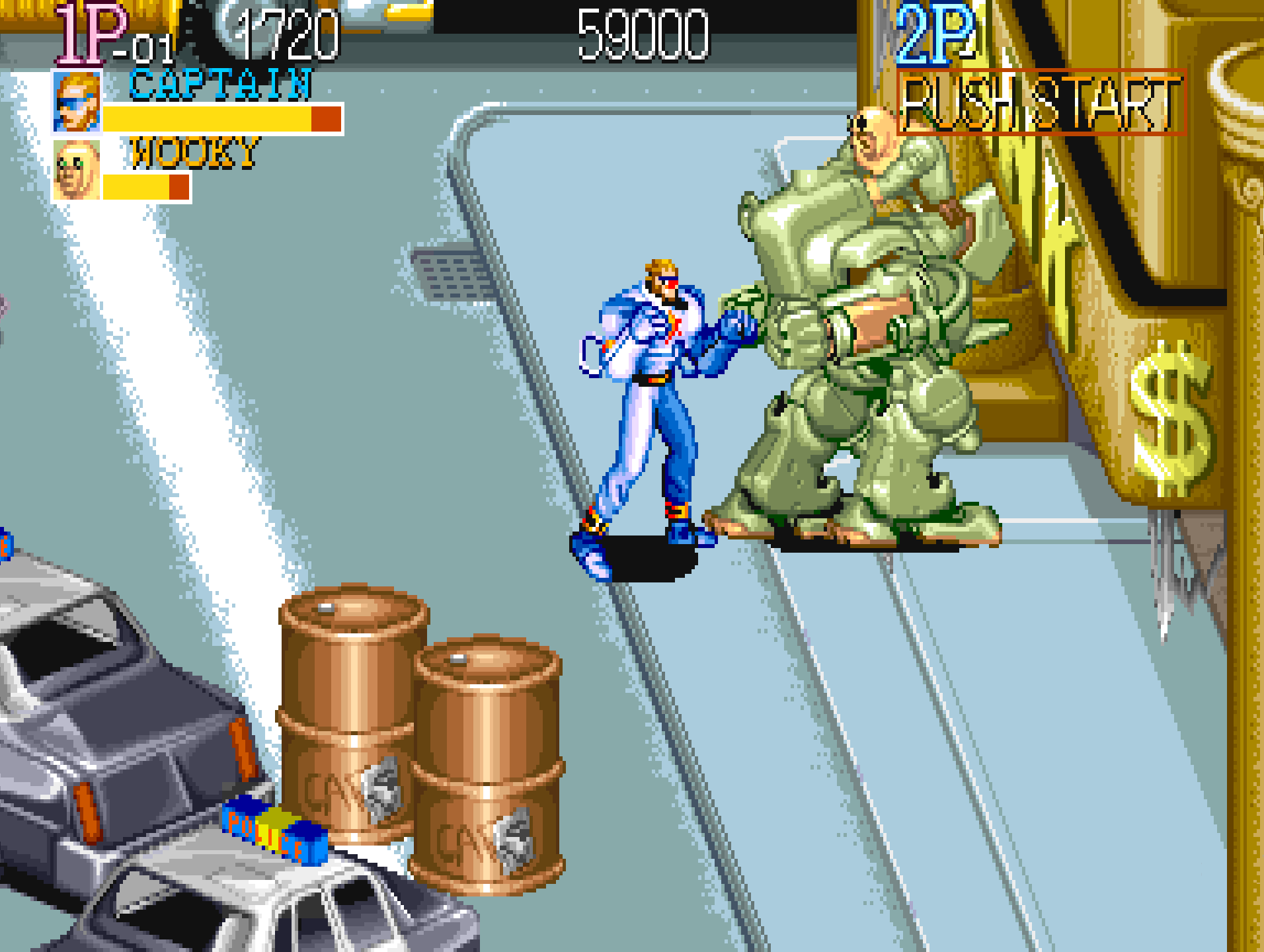
Development and History
- Developer: Capcom
- Publisher: Capcom
- Release Date: 1991 (Japan and North America)
Originally conceived as a mascot for Capcom’s early NES and Famicom manuals, Captain Commando evolved into a fully playable character in his own game. Developed for the CPS-1 arcade hardware, the game built on the success of Final Fight, adding new mechanics and a distinctly comic-book/sci-fi setting.
The game’s over-the-top characters and imaginative stages helped set it apart from other beat-’em-ups of the era.
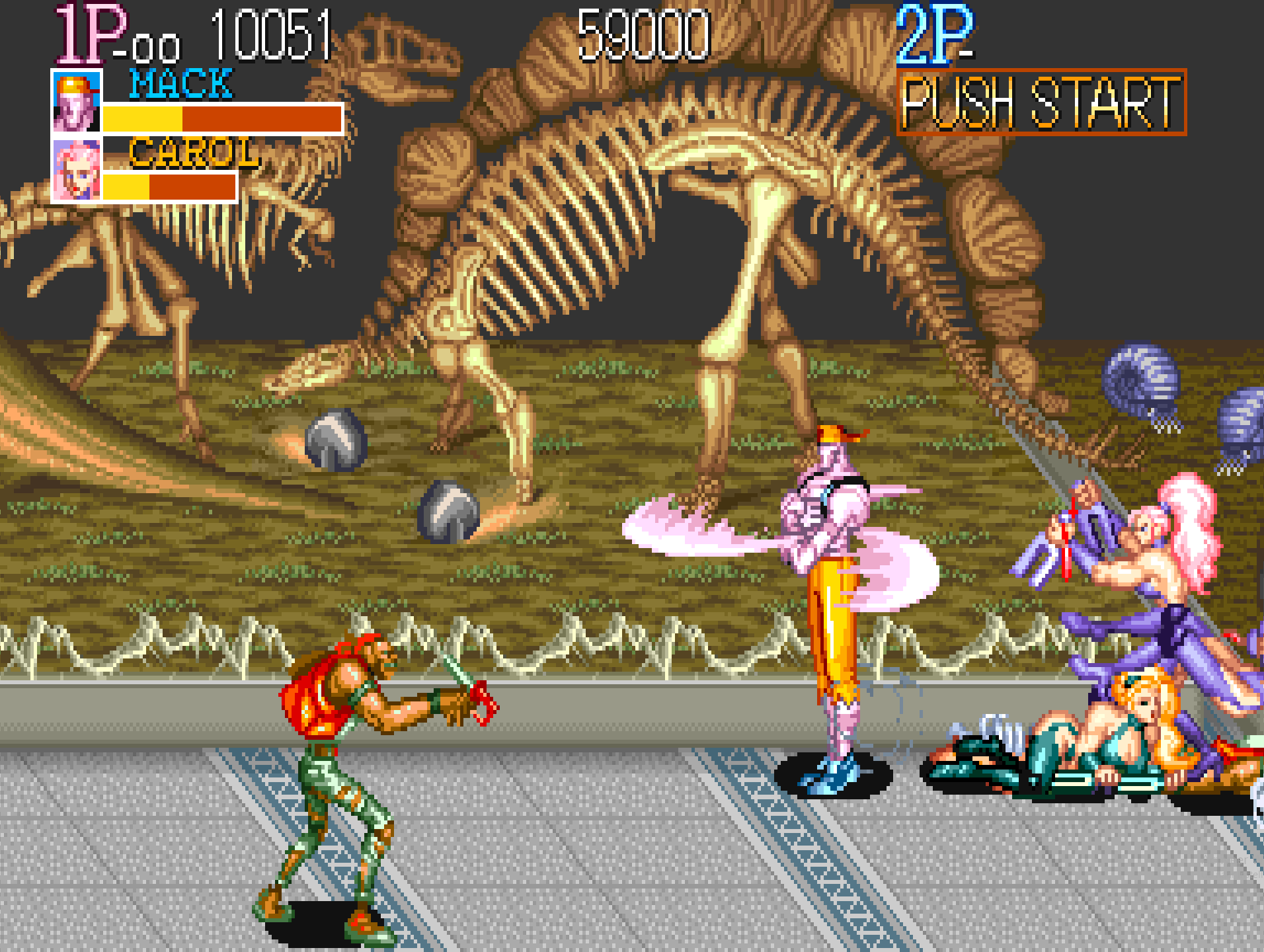
Gameplay Video
Gameplay and Mechanics
Core Gameplay
Players choose from four members of the Commando Team and fight through nine stages filled with enemies and minibosses. The game is known for its unique character abilities and environmental interactions.
- Playable Characters: Captain Commando, Mack the Knife, Ginzu the Ninja and Baby Head
Gameplay Features:
- Rideable Machines: Players can hop into exosuits for heavy firepower and melee attacks.
- Grab and Slam Mechanics: Standard for the genre but enhanced with character-specific flair.
- Co-Op Play: Up to four players can join simultaneously in the arcade version.
- Item Pickups: Health items, point bonuses, and thrown weapons.
Challenges
- Enemy Variety: Mutant frogs, ninjas, robots, and cyborgs—each with unique attack patterns.
- Boss Battles: End-of-stage bosses include flamethrower maniacs, giant mutants, and armored assassins.
- Crowd Control: Managing multiple enemies on screen requires timing and positioning.
- High-Speed Combat: Enemies often attack in waves, forcing quick reactions.

Cultural Impact and Legacy
- Capcom Mascot Evolution: Captain Commando went from manual art to arcade hero.
- Shared Universe: Set in the same city as Final Fight (Metro City), tying it loosely to Street Fighter lore.
- Influence on Future Games: Captain Commando appeared in Marvel vs. Capcom as a playable fighter.
- Home Ports: Released on SNES (2-player), PlayStation, and later part of Capcom Beat 'Em Up Bundle.
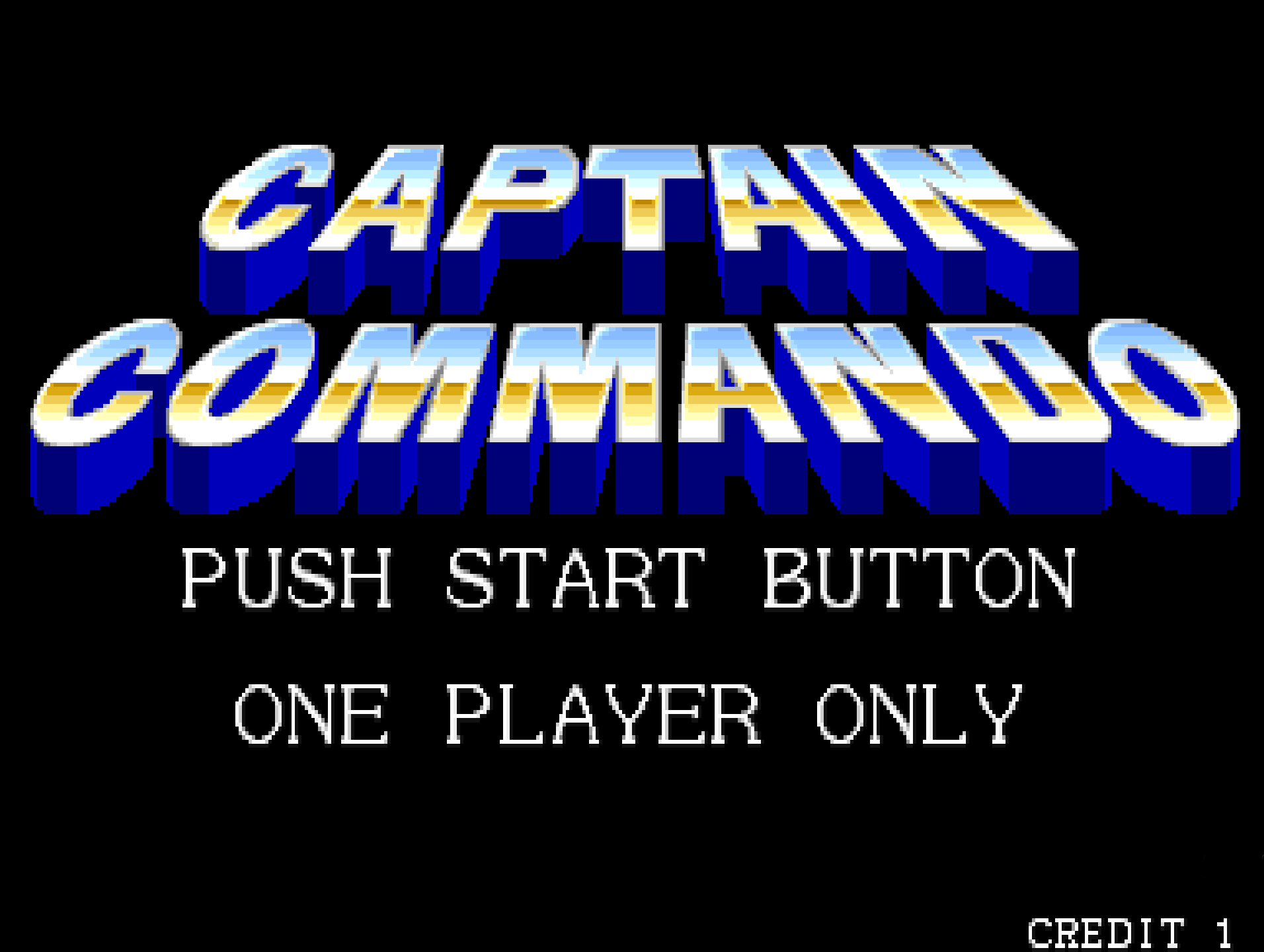
Fun Facts
- Original Concept: Captain Commando first appeared in Capcom’s NES packaging as a fictional spokesperson.
- Name Puns: Baby Head is also known as Hoover in Japan; Ginzu the Ninja was originally Sho.
- Rideable Armor Types: Three types of mechanized suits appear throughout the game.
- Multilingual Signs: The game’s stages feature signage in multiple languages, hinting at its global setting.
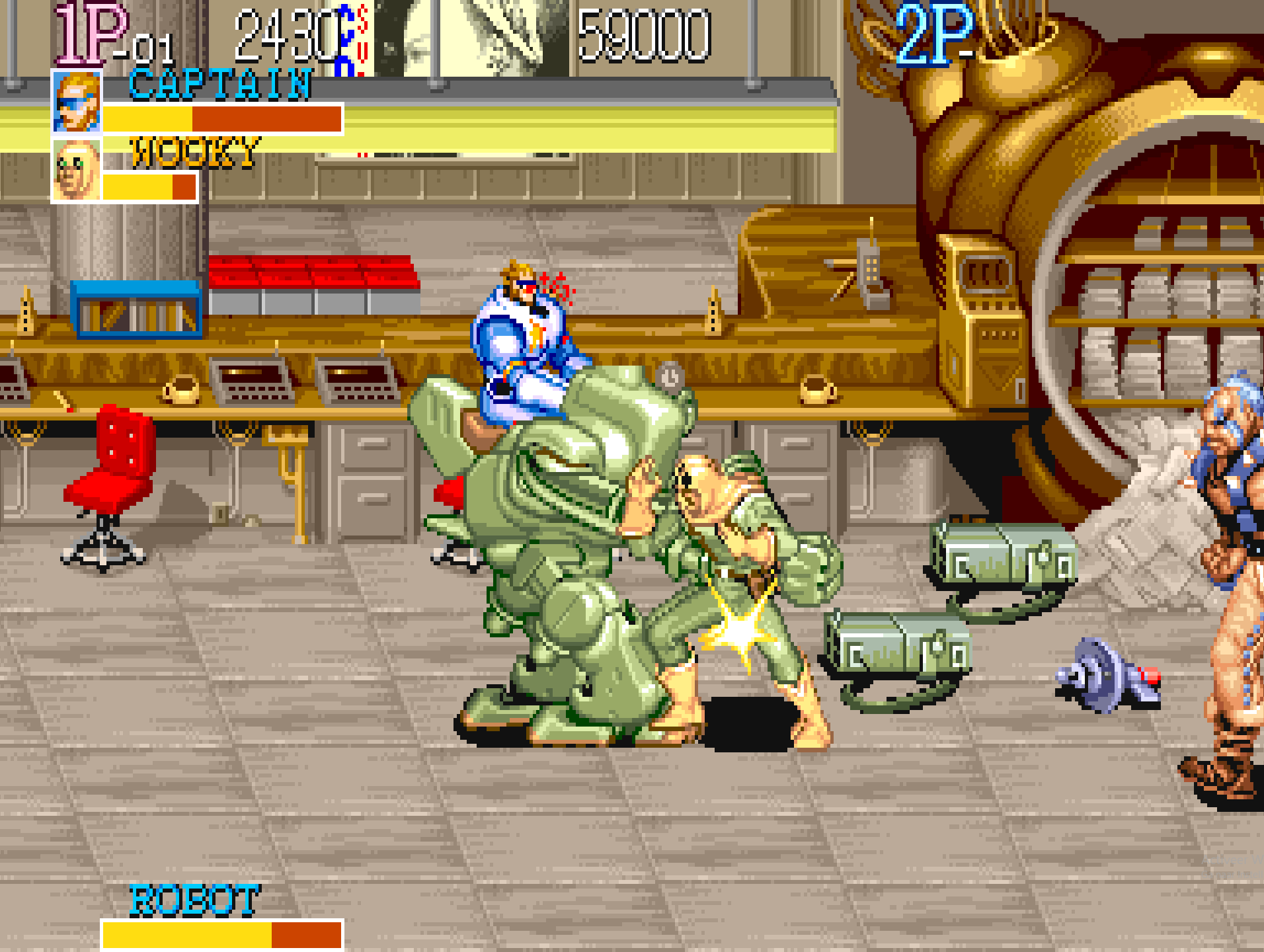
Conclusion
Captain Commando blended superhero flair with chaotic, action-heavy arcade gameplay. Its imaginative cast, colorful visuals, and tight co-op mechanics made it a standout of Capcom’s early ’90s arcade lineup. Whether you remember Baby Head’s mech stomps or Captain Commando’s electrified punches, this futuristic brawler holds a firm spot in beat-’em-up history.
Want to Go Deeper Into Arcade History?
If this game left you craving more, dive into the complete stories behind some of the most iconic arcade genres and franchises. These articles explore the rise, innovation, and legacy of the games that shaped arcade culture:
- Top 25 Beat ’Em Up Arcade Games of All Time – Discover the ultimate ranking of the greatest beat ’em ups ever to hit arcades
- The History of Beat ’Em Up Arcade Games – From Double Dragon to Final Fight, here’s how brawlers ruled the late ’80s.
- Donkey Kong’s Rise to Fame: How a Desperate Bet Created a Gaming Legend – The untold story of how Nintendo turned failure into a global icon, launching Mario, Miyamoto, and a new era of arcade storytelling
- The Economics of Arcade Gaming: The Golden Age of Coin-Op – This article explores the full arc of arcade economics: the explosive rise, the industry-shaking crash, and the waves of reinvention that kept the business alive
- The Complete History of Mortal Kombat Arcade – How a gritty fighter became a pop culture phenomenon.
